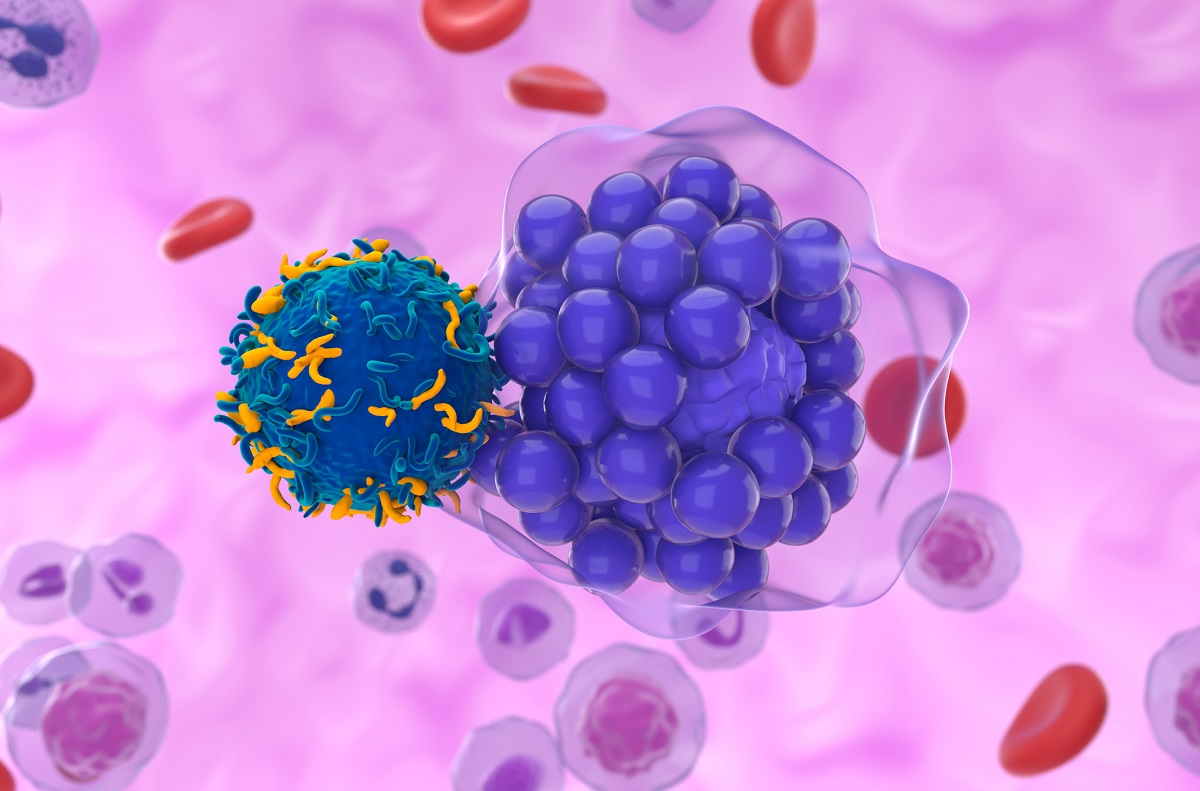KEY TAKEAWAYS
- The phase 1 & 2 trials aimed to investigate the efficacy and safety of combined targeted therapy ViPOR in relapsed DLBCL.
- Researchers noticed that ViPOR led to durable remissions with manageable AEs in relapsed DLBCL.
The identification of oncogenic mutations in diffuse large B-cell lymphoma (DLBCL) has led to the development of drugs that target essential survival pathways, but whether targeting multiple survival pathways may be curative in DLBCL is unknown.
Christopher Melani and the team aimed to assess the efficacy and safety of ViPOR, a combination therapy that targets multiple survival pathways, in patients with relapsed DLBCL.
They performed a single-center, phase 1b-2 study of a regimen of venetoclax, ibrutinib, prednisone, obinutuzumab, and lenalidomide (ViPOR) in relapsed or refractory DLBCL. In phase 1b, which included patients with DLBCL and indolent lymphomas, 4 dose levels of venetoclax were evaluated to identify the recommended phase 2 dose, with fixed doses of the other 4 drugs.
A phase 2 expansion in patients with germinal-center B-cell (GCB) and non-GCB DLBCL was performed. ViPOR was administered every 21 days for 6 cycles.
About 20 patients (10 with DLBCL) were involved in phase 1b of the study. A single dose-limiting toxic effect of grade 3 intracranial hemorrhage occurred, establishing venetoclax at a dose of 800 mg as the recommended phase 2 dose. Phase 2 included 40 patients with DLBCL. Toxic effects observed among all patients included grade 3 or 4 neutropenia (in 24% of the cycles), thrombocytopenia
(in 23%), anemia (in 7%), and febrile neutropenia (in 1%).
Objective responses occurred in 54% of 48 evaluable patients with DLBCL, and complete responses occurred in 38%; complete responses were exclusively in patients with non-GCB DLBCL and high-grade B-cell lymphoma with rearrangements of MYC and BCL2 or BCL6 (or both).
Circulating tumor DNA was undetectable in 33% of the patients at the end of ViPOR therapy. With a median follow-up of 40 months, 2-year progression-free survival (PFS) and overall survival (OS) were 34% (95% CI, 21 to 47) and 36% (95% CI, 23 to 49), respectively.
The study concluded that treatment with ViPOR was associated with durable remissions in patients with specific molecular DLBCL subtypes and was mainly associated with reversible adverse events (AEs). (Funded by the Intramural Research Program of the National Cancer Institute and the National Center for Advancing Translational Sciences of the National Institutes of Health and others.)
The trial was funded by the National Cancer Institute (NCI).
Source: https://pubmed.ncbi.nlm.nih.gov/38899693/
Clinical Trial: https://clinicaltrials.gov/study/NCT03223610
Melani C, Lakhotia R, Pittaluga S, et al. (2024). “Combination Targeted Therapy in Relapsed Diffuse Large B-Cell Lymphoma.” N Engl J Med. 2024 Jun 20;390(23):2143-2155. doi: 10.1056/NEJMoa2401532. PMID: 38899693; PMCID: PMC11192235.



